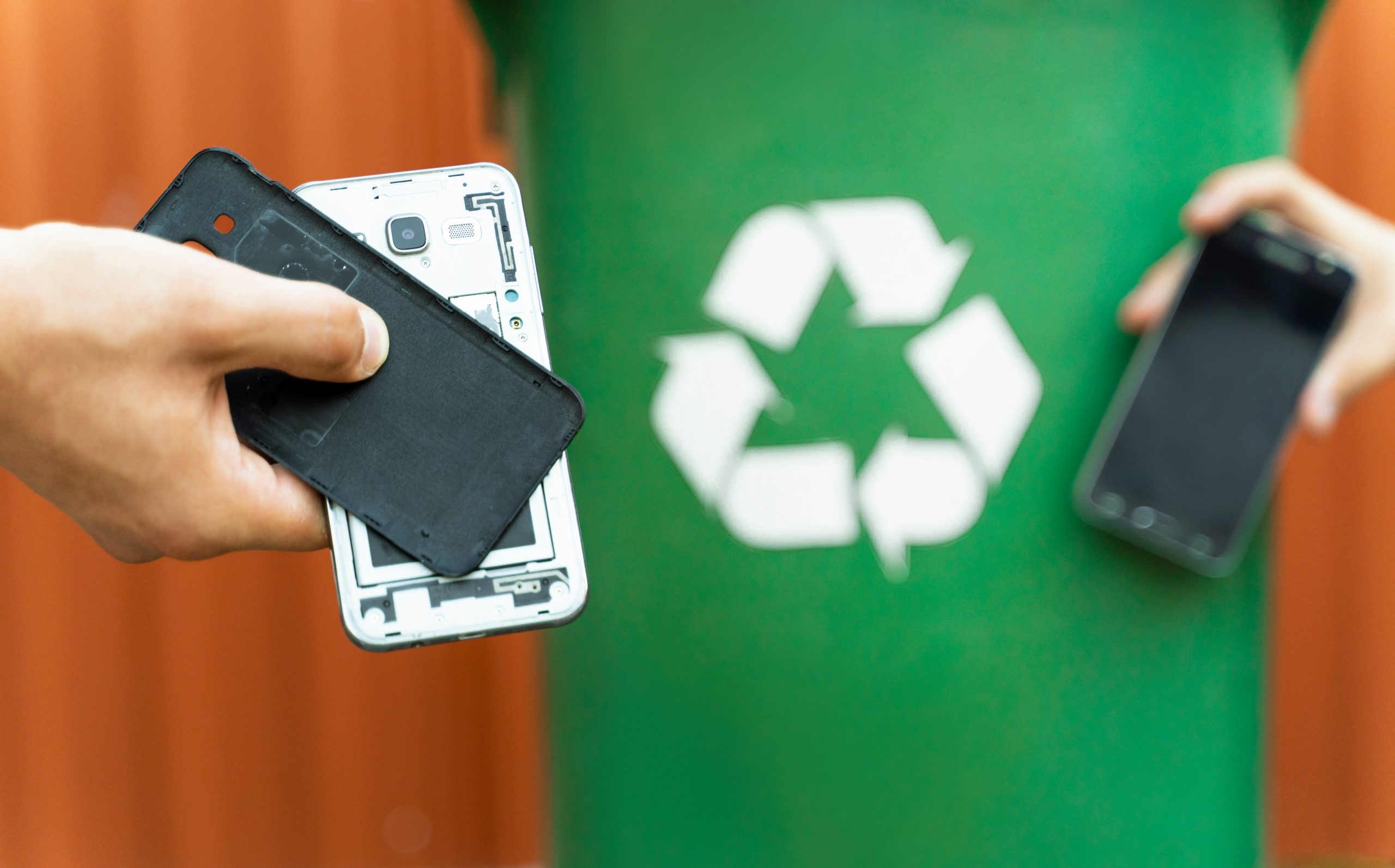



July 15, 2020



The Global E-Waste Monitor 2020 reports a record 59 tons of e-waste, and predicts a rise to 81 tons by 2030.
July 14, 2020 – N.F. Mendoza
Even non-techies can be reliant on many pieces of technology, as they navigate the day: Smart watch, smart phone, earbuds, tablets, laptops, car charger, and more. And while there’s the unicorn who proudly holds up their still-working iPhone 4, today’s tech has a shelf-life. As technology grows faster and less expensive, increasingly more people have any combination of tech gadgets.
“Between our reliance on technology and ‘the upgrade culture’ that has become pervasive in recent years, it’s clear why electronic waste is rising at such an incredibly high rate,” said Liam Howley, CMO of Decluttr, an online tech consignment company. “Around 130 million cell phones are thrown away each year in the US, with that number growing.”
Eventually, most tech becomes e-waste, a fast-growing worldwide problem. Electronic and electrical equipment are linked to widespread global economic development. The Global E-Waste Monitor 2020 reported a record 2.7 million tons of e-waste (discarded products with a battery or plug), and predicts that figure will rise to 81 tons by 2030.
Waste in general is a major problem, and most have heard of the floating island of trash known as the Great Pacific Garbage Patch (GPGP), more than twice the size of Texas, floating between Hawaii and California. Weighing more than 88,000 tons, the GPGP is only one of five offshore accumulations of trash.
In 2019, only 17.4% of e-waste was officially recorded as collected and recycled. The report noted that “iron, copper, gold, and other high-value, recoverable materials conservatively valued at $57 billion, greater than the GDP of most countries, were mostly dumped or burned, rather than collected for treatment and reuse.”
“At this time, 25 US states have laws requiring e-waste recycling, with several more states working toward new legislation,” said Wesley Poritz, founder and owner of Big Sky Recycling. “State e-waste recycling laws affect some 65% of Americans.”
Perhaps people don’t know their options. “Commodity values are low, which puts economic pressure on the industry,” said Gordon Burgoyne, business manager at Electronics Recycling. “People want to responsibly recycle electronics but don’t know how.” It’s “a tremendous amount of waste that must be managed responsibly to protect the environment.”
Improper management of e-waste contributes to global climate change. “If the materials in e-waste are not recycled, they cannot substitute primary raw materials and reduce greenhouse gas emissions from extraction and refinement of primary raw materials.”
“If we don’t properly recycle our electronics, there are very adverse impacts to our environment,” Burgoyne said. “People want to put that old TV set on the curb for convenience, but you risk hazardous compounds leaking into the water table” from landfills.
Discarded refrigerators and air-conditioners released 108 tons of CO2 equivalents. It costs the world: The value of raw materials in global e-waste in 2019 was about $57 billion.
The reported amount of e-waste represents an average of 16 pounds per capita, and is projected to grow 82.3 tons globally by 2030 (almost doubling in 16 years from the 2014 figures). E-waste is a health and environmental hazard. If mishandled, substances such as mercury (55 tons) are likely in undocumented e-waste flows.
“The largest amount of e-waste was from Asia; China and India were two of the top three most significant, the US the second-biggest contributor,” said Kunal Phalpher, Chief Commercial Officer of Li-Cycle Corp.
Many countries have adopted a national e-waste policy. Legislation or regulation increased from 61 to 78 countries between 2014 and 2019. In many regions, proper e-waste collection and management is poor, regulatory advances are slow, and enforcement is low.
Global collection and recycling rates (recycled materials are reclaimed):
“European countries have been among the earliest adopters of e-waste policy, driven by the EU,” Phalpher said.
In 2019, 17.4% of global e-waste was documented, collected, and properly recycled, but 82.6% represent undocumented global e-waste flows.
If valuable materials within e-waste are reused and recycled, this can promote a circular economy through secondary material use.
“The biggest thing that people can do is to stop the cycle of buying new and opt for used or refurbished,” Howley said. “We need to encourage people to recycle electronics more. Less than 1% of smartphones sold globally are recycled.”
Burgoyne believes the solution is “education, the only way people will know how to recycle properly in the safest way possible.”
The report calls for an internationally recognized methodological framework to measure and monitor e-waste to help assess developments and evaluate goals.
